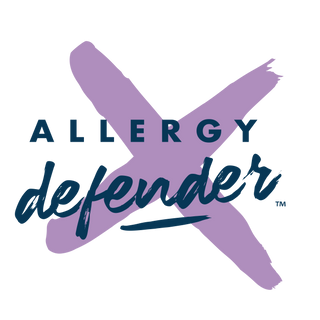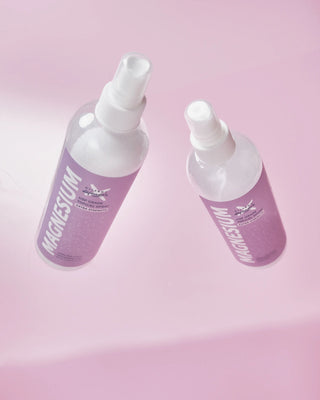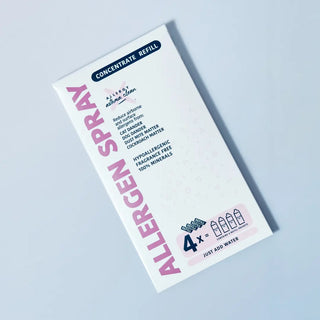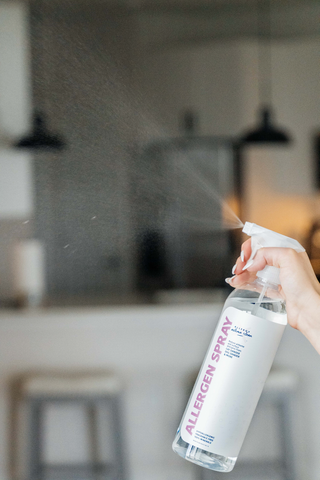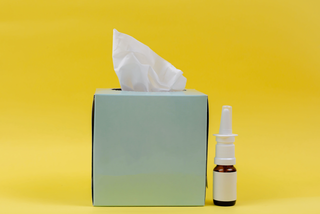Mastering Mold Allergy: Effective Treatments, Essential Tests, and Managing Allergic Reactions
If you're one of the millions of people suffering from mold allergies, you know just how frustrating and debilitating they can be. Whether your mold allergy manifests as a runny nose, itchy eyes, or more severe reactions, understanding the best strategies for managing allergic reactions is key.
Don't let mold allergies control your life – empower yourself with the knowledge and tools to overcome them. Let's take the first step towards mastering mold allergy together.
Understanding mold allergies
Mold allergies occur when your immune system overreacts to exposure to mold spores. Mold is a type of fungi that thrives in damp and humid environments, such as basements, bathrooms, and areas with water damage. When mold spores are inhaled, they can trigger an allergic reaction in susceptible individuals. Common symptoms of mold allergies include nasal congestion, sneezing, coughing, itchy eyes, and throat irritation. In some cases, mold allergies can also lead to more severe reactions, such as difficulty breathing and asthma attacks. It's important to understand the signs and symptoms of mold allergies so that you can seek appropriate treatment and manage your condition effectively.
Mold allergies are often mistaken for other respiratory conditions, such as seasonal allergies or the common cold. However, there are certain characteristics that can help differentiate mold allergies from other ailments. Unlike colds, mold allergies tend to persist for prolonged periods, even when there are no obvious signs of illness. Additionally, mold allergies are typically triggered by exposure to mold spores, whereas seasonal allergies are often caused by pollen or other airborne allergens. Understanding these distinctions can help you and your healthcare provider in accurately diagnosing and managing your mold allergy.
Testing for mold allergies
If you suspect that you have a mold allergy, it's important to get properly tested to confirm the diagnosis. There are several tests available to identify mold allergies and determine the specific type of mold you're allergic to. One common test is a skin prick test, where small amounts of mold extracts are placed on your skin and then pricked with a needle. If you're allergic to a particular type of mold, you will develop a small raised bump at the site of the prick. Another test is a blood test, which measures the levels of specific antibodies in your blood that are associated with mold allergies. These tests can help your healthcare provider pinpoint the specific triggers of your mold allergies and develop an appropriate treatment plan.
In addition to these diagnostic tests, it's also important to assess your living environment for the presence of mold. This can be done through a comprehensive mold inspection conducted by a professional. They will examine your home for any visible signs of mold growth, as well as take air samples to test for mold spores. Identifying the source of mold in your environment is crucial for effective management of your mold allergy. Once the source is identified, appropriate remediation measures can be taken to minimize your exposure to mold and reduce the severity of your symptoms.
There are three main ways to test for mold in your house:
- Visual inspection: Look for visible signs of mold growth, such as black, green, or white patches on walls, ceilings, floors, or furniture. Mold also has a musty odor.
- Home mold test kits: These kits are available at most hardware stores and home improvement stores. They typically involve collecting a sample of mold or dust and sending it to a lab for analysis. However, these kits can be inaccurate and may not identify the type of mold present.
- Professional mold testing: This is the most accurate way to test for mold. A professional mold inspector will use specialized equipment to collect air and surface samples, which will then be sent to a laboratory for analysis. This will identify the type of mold present and the extent of the growth.
How NOT to deal with mold in your home:
-
Ignoring the Mold: This might seem like the easiest solution, but it's a recipe for trouble. Mold spores can spread through the air, potentially causing respiratory problems, allergies, and irritation for those living in the house.
-
Painting Over Mold: While a fresh coat of paint might hide the unsightly mold for a while, it won't solve the underlying problem. The mold will continue to grow underneath the paint, potentially causing further damage and worsening air quality.
-
Using Bleach as a Sole Solution: Bleach is often thought of as a disinfectant, but it's ineffective against mold. While it might temporarily lighten the mold's color, bleach doesn't kill the spores or root system. In fact, it can damage surrounding materials and even release harmful fumes.
Effective treatments for mold allergies
When it comes to treating mold allergies, there are several options available, ranging from medications to lifestyle changes and alternative therapies. The choice of treatment depends on the severity of your symptoms and the impact of mold allergies on your daily life. It's important to work closely with your healthcare provider to develop a personalized treatment plan that suits your specific needs.
Medications for mold allergies
One of the most common treatments for mold allergies is the use of medications to relieve symptoms and control allergic reactions. Antihistamines are commonly prescribed to reduce itching, sneezing, and runny nose associated with mold allergies. They work by blocking the effects of histamine, a chemical released by your immune system in response to allergens like mold. Nasal corticosteroids are another option, which reduce inflammation in the nasal passages and help alleviate congestion and other nasal symptoms. Decongestants can also be used to temporarily relieve nasal congestion, but they should be used cautiously and for short periods to avoid rebound congestion. Your healthcare provider may also recommend other medications, such as leukotriene modifiers or mast cell stabilizers, depending on the severity of your symptoms.
Allergy shots for mold allergies
For individuals with severe mold allergies that do not respond adequately to medications, allergy shots, also known as immunotherapy, may be recommended. Allergy shots involve receiving regular injections of small amounts of the allergen, in this case, mold extracts, over a period of time. The goal of allergy shots is to gradually desensitize your immune system to the mold allergen, reducing the severity of your allergic reactions. Allergy shots can be highly effective in controlling mold allergies and reducing the need for medication. However, they require a significant time commitment, as they typically involve weekly or monthly visits to your healthcare provider for several months or years.
Natural remedies for mold allergies
In addition to conventional treatments, there are also natural remedies that might help alleviate the symptoms of mold allergies. These remedies include saline nasal rinses, which can help flush out allergens and reduce nasal congestion. However, it's important to remember that natural remedies may not be as well-studied or regulated as conventional medications, so it's essential to discuss their use with your healthcare provider before trying them.
Managing allergic reactions to mold
While it's important to treat mold allergies, managing allergic reactions is equally crucial. When exposed to mold, it's important to take immediate steps to minimize your symptoms and prevent further complications. If you know you're allergic to mold, try to avoid exposure as much as possible. Keep windows closed during high mold seasons, use air purifiers with HEPA filters, and regularly clean and vacuum your home to reduce mold spores. When outdoors, wear a mask to filter out allergens and avoid spending time in damp or moldy areas. If you do come into contact with mold, wash your hands and face thoroughly to remove any residual spores. Additionally, it's important to follow your prescribed treatment plan and take medications as directed to manage allergic reactions effectively.
Preventing mold growth in your home
Prevention is key when it comes to mold allergies. Taking steps to prevent mold growth in your home can significantly reduce your exposure to mold and minimize the severity of your symptoms. Here are some practical tips to create a healthier living environment:
- Control humidity levels: Keep humidity levels in your home below 50 percent to prevent mold growth. Use dehumidifiers in damp areas like basements and bathrooms, and ensure proper ventilation in these spaces.
- Fix leaks promptly: Any water leaks or plumbing issues should be addressed promptly to prevent mold from thriving. Inspect your home regularly for any signs of water damage and take immediate action to fix any issues.
- Improve air circulation: Good air circulation can help prevent moisture buildup and inhibit mold growth. Use fans or open windows to improve airflow in your home, especially in areas prone to dampness.
- Clean and dry affected areas: If you do encounter mold growth in your home, clean and dry the affected areas thoroughly. Use appropriate cleaning solutions and consider using mold-resistant paints or materials in high-risk areas.
- Regularly clean and maintain HVAC systems: Proper maintenance of your heating, ventilation, and air conditioning (HVAC) systems is essential to prevent mold growth. Regularly clean and replace filters, and have your HVAC system inspected by professionals.
Mold allergies can be a significant source of discomfort and disruption in your life, but with the right knowledge and tools, you can effectively manage and treat them. Understanding the symptoms, getting tested for mold allergies, and exploring the various treatment options available are crucial steps towards mastering mold allergy. Medications, allergy shots, natural remedies, and lifestyle changes can all contribute to alleviating symptoms and reducing allergic reactions. Additionally, taking proactive measures to prevent mold growth in your home can significantly reduce your exposure to mold and improve your overall quality of life. By empowering yourself with the necessary information and working closely with your healthcare provider, you can regain control and overcome mold allergies. Remember, you don't have to let mold allergies control your life – take the first step towards mastering mold allergy today.
